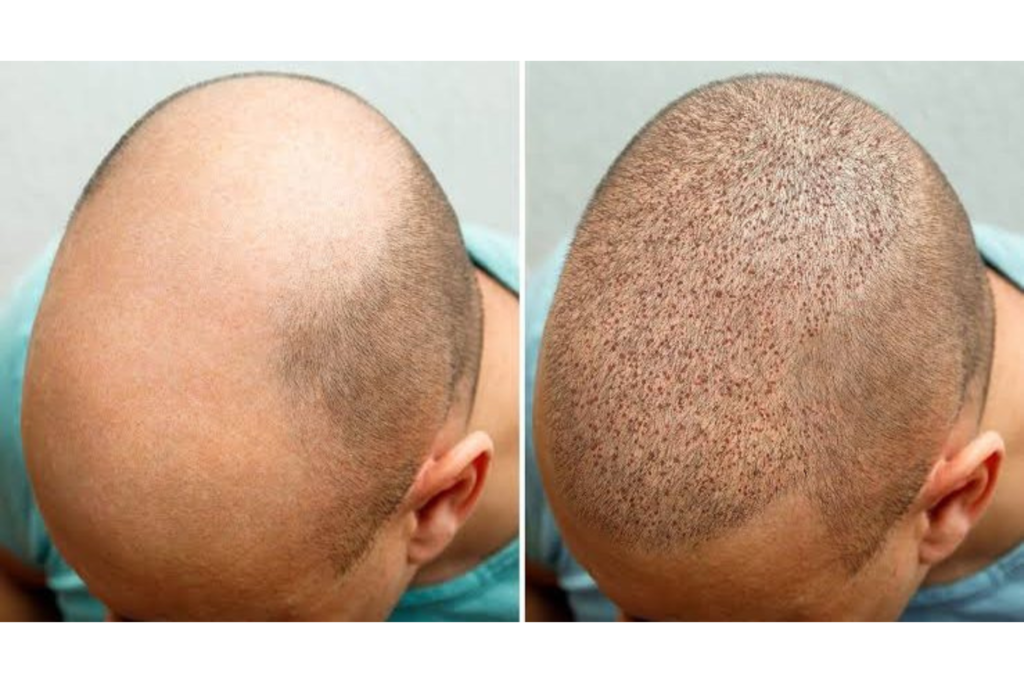Hair restoration has evolved into a sophisticated field that combines art and science to help individuals regain their confidence and enhance their appearance. For those struggling with hair loss, understanding the various techniques and innovations in hair restoration can empower informed decisions and foster realistic expectations. In this blog, we will explore the science behind popular hair restoration techniques, including Follicular Unit Extraction (FUE), Follicular Unit Transplantation (FUT), and Scalp Micropigmentation (SMP). We will also discuss recent innovations in the field that are making hair restoration more effective and accessible.
Understanding Hair Loss
Before diving into the restoration techniques, it’s important to understand the underlying causes of hair loss. Common reasons for hair loss include:
- Genetics: Androgenetic alopecia, commonly known as male or female pattern baldness, is a hereditary condition that leads to gradual thinning of hair.
- Hormonal Changes: Hormonal fluctuations due to pregnancy, menopause, or thyroid issues can cause temporary or permanent hair loss.
- Medical Conditions: Conditions such as alopecia areata, scalp infections, and autoimmune diseases can contribute to hair loss.
- Stress: Emotional or physical stress can lead to a temporary form of hair loss known as telogen effluvium.
- Nutritional Deficiencies: Lack of essential nutrients, such as iron, vitamin D, and biotin, can impact hair health and growth.
Understanding the specific cause of hair loss is crucial in determining the appropriate restoration technique.
Hair Restoration Techniques
1. Follicular Unit Extraction (FUE)
FUE is one of the most popular hair restoration techniques due to its minimally invasive nature and natural-looking results. The process involves the following steps:
- Donor Hair Harvesting: Individual hair follicles are extracted from the donor area (usually the back of the scalp) using a specialized punch tool.
- Preparation of Follicles: The extracted follicles are carefully prepared for implantation.
- Follicle Implantation: The prepared follicles are then implanted into the recipient area where hair loss has occurred. The surgeon strategically places the follicles to create a natural hairline and density.
Advantages of FUE:
- Minimal scarring: Because FUE involves extracting individual follicles, the resulting scars are tiny and less noticeable.
- Quick recovery: Patients can typically return to their normal activities within a few days.
- Versatility: FUE can be used for various hair restoration needs, including beard and eyebrow transplants.
Disadvantages of FUE:
- Time-consuming: The procedure can take several hours, especially if a large number of follicles are being transplanted.
- Cost: FUE tends to be more expensive than other techniques due to the skill and time required.
2. Follicular Unit Transplantation (FUT)
FUT, also known as the strip method, involves the removal of a strip of scalp from the donor area. Here’s how the procedure works:
- Strip Harvesting: A strip of scalp containing healthy hair follicles is surgically removed from the donor area.
- Follicle Dissection: The strip is then dissected into individual follicular units under a microscope.
- Implantation: Similar to FUE, the prepared follicular units are implanted into the recipient area.
Advantages of FUT:
- Greater follicle yield: FUT can harvest a larger number of follicles in a single session, making it suitable for individuals with advanced hair loss.
- Cost-effective: Generally, FUT is less expensive than FUE.
Disadvantages of FUT:
- Scarring: The linear scar left by the strip removal may be more noticeable, especially with short hairstyles.
- Longer recovery: The healing process may take longer compared to FUE, as the donor area requires time to heal.
3. Scalp Micropigmentation (SMP)
Scalp Micropigmentation (SMP) is a non-surgical technique that creates the illusion of hair through the application of pigments. Here’s how it works:
- Pigment Application: Trained practitioners use specialized equipment to deposit pigment into the scalp, mimicking the appearance of hair follicles.
- Customization: The color and density of the pigment are tailored to match the individual’s hair and skin tone.
Advantages of SMP:
- Immediate results: Unlike surgical methods, SMP provides instant visual results, giving the appearance of a full head of hair.
- Low maintenance: SMP requires minimal upkeep compared to hair restoration surgeries.
- Suitable for various hair loss stages: SMP can be an excellent option for individuals with thinning hair or complete baldness.
Disadvantages of SMP:
- Temporary results: Depending on skin type and care, the pigments may fade over time and require touch-ups.
- Not a permanent solution: SMP does not restore actual hair but rather creates the illusion of density.
Innovations in Hair Restoration
The field of hair restoration is continually evolving, with new technologies and techniques emerging to enhance results and improve patient experiences. Here are some noteworthy innovations:
1. Robotic Hair Restoration
Robotic-assisted FUE systems, such as the ARTAS system, use advanced imaging and robotics to enhance precision during follicle extraction. This technology allows for more efficient harvesting while minimizing damage to surrounding tissue.
2. Platelet-Rich Plasma (PRP) Therapy
PRP therapy involves drawing a small amount of the patient’s blood, processing it to concentrate the platelets, and injecting it into the scalp. This treatment promotes healing, stimulates hair growth, and can enhance the results of hair restoration procedures.
3. 3D Hair Mapping Technology
Advanced imaging technology allows specialists to create detailed maps of the scalp, identifying optimal donor areas and determining the best approach for hair restoration. This technology enhances planning and outcomes.
4. Stem Cell Therapy
Emerging research in stem cell therapy aims to harness the regenerative properties of stem cells to stimulate hair growth. While still in experimental stages, this innovative approach holds promise for future hair restoration techniques.
Conclusion
Hair restoration is a dynamic field that combines artistry and science to help individuals reclaim their hair and confidence. Understanding the various techniques available, from FUE and FUT to SMP, empowers individuals to make informed decisions about their hair restoration journey. With ongoing innovations and advancements in technology, the future of hair restoration looks promising, offering hope and solutions for those affected by hair loss.
At Alive Hair and Aesthetic Clinic, we are dedicated to providing personalized care and the latest advancements in hair restoration. If you’re considering hair restoration, contact us to schedule a consultation. Together, we can explore the options that best suit your needs and help you embark on a transformative journey toward renewed confidence and vitality.

